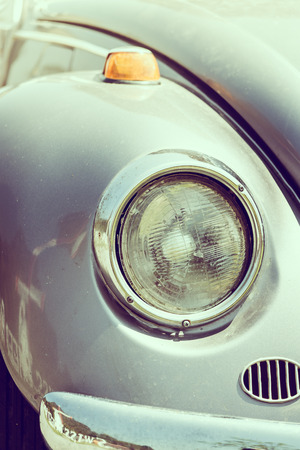Roots of British Classic Car Shows
The story of classic car shows in the United Kingdom is woven into the rich tapestry of post-war Britain, a time when motoring became both a passion and a symbol of renewed optimism. As the dust settled after the Second World War, enthusiasts sought solace and camaraderie in their love for automobiles. The earliest gatherings were modest affairs, often held on village greens or at local pub car parks, where proud owners would display their lovingly maintained Austins, Morrises, and Rileys to an appreciative crowd. This burgeoning movement soon found structure with the formation of dedicated automotive clubs—many of which remain cornerstones of the British classic car scene today.
| Era | Key Developments |
|---|---|
| Late 1940s | Informal gatherings among war veterans and motoring enthusiasts; focus on pre-war vehicles. |
| 1950s | Establishment of regional car clubs; first formalised classic car rallies and displays. |
| 1960s | National-level events begin; growing interest in preservation and restoration. |
It was during these formative years that the distinctively British spirit of classic car appreciation took root. With every bonnet lifted and every tale swapped over a pint, a tradition was born—one that celebrated not just the engineering marvels themselves but also the social connections forged through shared nostalgia. The seeds sown by those early devotees continue to blossom at events across the UK, where heritage, history, and the unmistakable charm of old motors come together in true British style.
2. Icons and Eccentrics: British Cars on Display
There’s nothing quite like the heady scent of engine oil mingling with the aroma of fresh-cut grass at a classic car show in the heart of the British countryside. Across the UK, these gatherings are a celebration of more than just gleaming chrome and polished bonnets—they’re an affectionate nod to a bygone era, where every marque tells its own tale. From the humble Morris Minor, once the darling of suburban drives, to the aristocratic Jaguar purring along stately avenues, classic car shows bring together a patchwork of automotive icons that have defined generations.
Each car on display is far more than mere metal and mechanics; it’s a rolling testament to Britain’s motoring ingenuity and eccentric spirit. Owners, often as colourful as their vehicles, gather to swap stories—tales of barn finds, painstaking restorations, or Sunday outings that ended with a roadside repair using nothing but ingenuity and a bit of luck. The cars themselves become vessels for these narratives, carrying not just passengers but decades of memories from one gathering to the next.
Marque |
Notable Models |
Era |
Signature Quirk |
|---|---|---|---|
| Morris | Minor, Oxford | 1940s-1970s | Affectionate “moggie” nickname; famed for DIY repairs |
| Jaguar | E-Type, XK120 | 1950s-1970s | Sweeping lines; “the most beautiful car ever made” – Enzo Ferrari |
| Austin | Mini, Healey 3000 | 1960s-1980s | Tiny size; giant personality on rally stages and in city lanes alike |
| Rolls-Royce | Silver Shadow, Corniche | 1960s-1990s | Smoothest ride in town; synonymous with understated luxury |
| Lotus | Cortina, Elan | 1960s-1980s | Lightweight construction; legendary handling in British rainstorms |
At shows from Goodwood to Beaulieu and countless village greens in between, enthusiasts delight not only in the cars but also in their unique quirks—whether it’s the cheeky wink of a Mini’s headlamp or the dignified burble of a well-tuned Rover. These events are less about concours perfection and more about celebrating character: faded paintwork wears its history proudly, and every scratch tells another story. For many, it’s this tapestry of icons and eccentrics—both human and mechanical—that makes classic car shows such cherished fixtures in Britain’s cultural calendar.

3. Venue Traditions: Country Estates and Village Greens
When one thinks of classic car shows in the UK, its impossible to separate the gleaming paintwork and polished chrome from the timeless beauty of their surroundings. The quintessentially British settings—stately country estates, sweeping lawns, and quaint village greens—are as much a part of these events as the motors themselves. These venues not only provide a picturesque backdrop but also reflect a deep-rooted connection between motoring heritage and British social tradition.
The grand grounds of stately homes, such as Blenheim Palace or Goodwood House, lend an air of elegance and history to classic car gatherings. Their manicured gardens and historic facades set the perfect scene for concours d’elegance, where rare marques are displayed with pride. Meanwhile, local cricket pitches and village greens offer a more intimate charm, bringing together communities in a relaxed, festive atmosphere reminiscent of summer fêtes and village picnics.
| Venue Type | Typical Features | Cultural Significance |
|---|---|---|
| Stately Homes & Country Estates | Expansive parkland, historic architecture, landscaped gardens | Links motoring history with aristocratic British heritage |
| Village Greens & Cricket Pitches | Lush grass, community pavilions, proximity to local pubs | Celebrates rural traditions and grassroots enthusiasm |
| Seaside Promenades & Market Town Squares | Coastal views, Victorian bandstands, bustling market stalls | Adds a nostalgic holiday spirit to motoring culture |
This interplay between classic cars and venue tradition shapes the character of each show. Whether one is admiring a Jaguar E-Type beneath ancient oak trees or chatting with fellow enthusiasts over tea on the green, it’s clear that these settings create an ambience unique to Britain. The sense of continuity—where past meets present—is celebrated not just through vehicles on display but through the very locations that have witnessed generations of British life.
4. Community and Camaraderie
One of the most charming aspects of classic car shows across the UK is the sense of community that blossoms among enthusiasts. These events are much more than mere exhibitions; they are gatherings where friendships are forged over a mutual appreciation for heritage vehicles and the art of restoration. The camaraderie is palpable, as owners and admirers swap stories about their latest projects, favourite driving routes through the countryside, or a particularly tricky bit of engine tuning.
Friendly rivalries often develop between clubs or individual owners, each keen to display their pride and joy in its best light. Yet, these competitions are always tinged with good humour and respect. It’s not uncommon to see one owner lending a spanner or advice to another, even if their cars are vying for the same trophy. The British spirit of fair play and gentle banter permeates every gathering, making everyone feel welcome—from seasoned mechanics to newcomers eager to learn.
Tea Breaks and Tinkering
No classic car show would be complete without the quintessential British tea break. Amidst rows of gleaming bonnets and polished chrome, you’ll find groups huddled over flasks and biscuits, sharing tales from the road while discussing everything from carburettor settings to weatherproofing old upholstery. These moments of respite are as integral to the experience as the cars themselves.
| Tradition | Description |
|---|---|
| Tea Breaks | A cherished pause for conversation, laughter, and homemade cakes—often enjoyed right next to classic motors. |
| Friendly Rivalry | Light-hearted competition for awards such as Best in Show, always underpinned by mutual respect. |
| Tinkering Together | Collaborative repairs or last-minute tweaks in the car park before judging begins. |
Lasting Friendships Forged
The bonds formed at these gatherings often extend beyond show days. Many enthusiasts remain in touch throughout the year, swapping parts, advice, or organising impromptu drives along scenic British lanes. It’s this blend of shared passion and genuine fellowship that keeps the classic car scene vibrant—a living testament to Britain’s enduring love affair with motoring history.
5. Preservation and Restoration Culture
One of the most cherished aspects of British classic car shows is the deep-rooted culture of preservation and restoration. Across the UK, there exists a unique passion for keeping these motoring icons not just as museum pieces, but in full running order—a living testament to engineering heritage and national pride. Whether it’s a lovingly maintained Austin Seven in a suburban garage or a rare Jaguar brought back to life by a master craftsman, the British approach celebrates both DIY spirit and expert skill.
The Spirit of DIY Repairs
For many enthusiasts, tinkering with classic motors in their own sheds or garages is almost a rite of passage. The sense of achievement that comes from sourcing an elusive part at an autojumble, or finally getting an old Morris Minor’s engine to purr again, connects owners directly with the legacy of British motoring ingenuity. Classic car shows often feature clubs and societies where members swap advice, parts, and tales of triumph over seized bolts or electrical gremlins.
The Role of Specialist Restorers
Yet not every restoration can be completed on a driveway. Across the country, specialist workshops—often family-run businesses passed down through generations—have earned renown for their meticulous craftsmanship. These artisans blend traditional skills with modern techniques, ensuring everything from E-type Jaguars to Land Rovers are restored to concours standard. Their expertise is especially vital for rare models where authenticity and detail are paramount.
Celebrating Both Approaches
| Aspect | DIY Repairs | Specialist Restorers |
|---|---|---|
| Typical Work | Routine maintenance, minor mechanical fixes, cosmetic touch-ups | Full body-off restorations, engine rebuilds, bespoke fabrication |
| Tools & Equipment | Basic hand tools, home workshop kits | Professional-grade equipment, paint booths, machining tools |
| Main Motivation | Personal satisfaction, learning new skills | Preserving heritage, achieving concours condition |
A Shared Passion for Heritage
No matter the method, what unites all classic car enthusiasts in Britain is a shared devotion to preserving history on wheels. This culture is proudly showcased at events up and down the country—from village green gatherings to world-famous festivals like Goodwood Revival—where every polished bonnet tells a story of patience, perseverance, and pride in British automotive tradition.
6. Modern Evolution: From Nostalgia to Sustainability
As the curtain rises on the 21st century, classic car shows across the UK are undergoing a fascinating transformation, blending cherished traditions with modern sensibilities. While the unmistakable scent of engine oil and polished walnut dashboards still lingers in the air, organisers are increasingly conscious of their environmental footprint and the expectations of a new generation of enthusiasts. This evolution is not just about displaying gleaming Morris Minors or Aston Martins; it’s about safeguarding heritage while embracing responsible stewardship for future decades.
The Green Shift: Embracing Sustainability
Many British classic car events now champion eco-friendly initiatives without sacrificing nostalgia. Whether its carbon offsetting schemes or encouraging public transport access, organisers take active steps to reduce emissions associated with large gatherings. Some events have even introduced awards for vehicles running on alternative fuels or retrofitted with sustainable technology, showing that vintage style can coexist with contemporary values.
| Sustainable Practice | Example at UK Shows |
|---|---|
| Carbon Offsetting | Partnering with tree-planting charities |
| Alternative Fuel Vehicles | Special categories for electric conversions |
| Recycling Initiatives | Dedicated recycling points throughout showgrounds |
| Green Transport Options | Discounted entry for visitors arriving by train or bicycle |
Younger Generations: Carrying the Torch
The demographic landscape of British car shows is also shifting. Where once tweed caps and wax jackets dominated, today you’ll find a growing number of young families and tech-savvy millennials eager to learn about motoring history. Interactive exhibits, social media engagement, and hands-on restoration workshops are now common features, ensuring that passion for classic vehicles remains alive and relevant.
Engaging Activities Attracting New Audiences:
- Live engine rebuild demonstrations
- Virtual reality driving experiences in iconic British classics
- Youth restoration competitions
The Balancing Act: Tradition Meets Tomorrow
Ultimately, British classic car shows continue to serve as living museums—places where history is not just preserved but actively celebrated and reimagined. By striking a balance between nostalgia and sustainability, and by inviting the next generation into the fold, these beloved gatherings promise to remain a vibrant part of Britain’s cultural tapestry for years to come.


